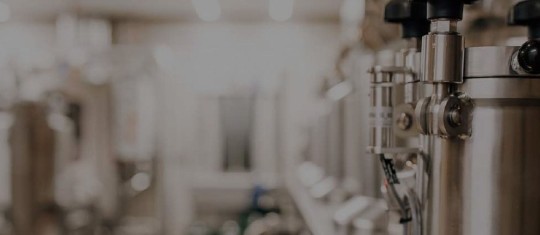Some things behave differently under the influence of alcohol. This can be easily observed in adults and, although less frequently, in pets as well. Also with dry hopping?
Joking aside. Sandro Cocuzza, Sandra Gmeinwieser (both Hopsteiner), Kathrin Helmschrott (TU München Weihenstephan), Frank Pfeifer (Hopsteiner) and Martin Zarnkow (Research Center Weihenstephan for Brewing and Food Quality) tackled this question in a pilot study. They wanted to find out which hop constituents go into solution at different alcohol concentrations and to what extent.
The topic is so interesting precisely because the current trend of low-alcohol and alcohol-free beers continues to roll on but experiences with dry hopping are mainly available in connection with higher alcohol contents. So dry-hopping took hold in the US with the rise of Double IPAs (7.5-10% by volume) from the mid-90s onwards. So we come from a strong alcohol influence, but now we can find out how dry hopping behaves with more moderation.
Such knowledge is particularly useful for recipe development. On the one hand, more and more beer styles are being offered in non-alcoholic variants, including dry-hopped ones such as India Pale Ale (IPA) or New England India Pale Ale (NEIPA) and the many variants that fall under the category "Juicy & Hazy". On the other hand, dry hopping can lift the overall sensory impression of any low or no-alcohol beer. Last but not least, this knowledge is also suitable for giving new suggestions to the development of products in the non-alcoholic segment.
How alcohol and hops interact in general is partly known from studies and practice. Ethanol is an effective solvent for the hydrophobic components of hops, a property that is used, for example, in the production of hop extracts. Furthermore, the alcohol concentration has an effect on sensory perception. This concerns, among other things, the perception of various volatile and non-volatile ingredients, orthonasal effects as well as the impression of sweetness, body and alcoholic warmth - to name just a few examples.
Experiment on a small scale
In their pilot study, the scientists used a dealcoholised wheat beer, added ethanol to it in stages and thus brought it to different alcohol concentrations. They dry-hopped the different concentration levels according to a standardised procedure and then analytically measured the ingredients. Since this was a laboratory-scale experiment, the results cannot be transferred 1:1 to industrial production. Nevertheless, the study gives good indications of which groups of substances go into solution at which alcohol contents.
Solubility under alcohol influence
Thus, within the scale, it turns out that no changes occur in the isomerised alpha acid (IAA) and in the humulinones. On the other hand, with increasing alcohol content, there is an increase in xanthohumol (XN) and the (non-isomerised) alpha and beta acids (AA and BA) and therefore also an increase in IBUs. Undoubtedly, the solubility of hydrophobic AA, BA and XN increases with increasing alcohol concentration. In contrast, alcohol has little to no effect on the solubility of the polyphenols and on the pH value and foam stability in the dry-hopped beers.
What increases with rising alcohol content, however, are the concentrations of mono- and sesquiterpenes. Both substance groups dissolve considerably better with increasing alcohol content. In contrast, terpene alcohols such as linalool and geraniol remain at a similar level with increasing alcohol concentration. This means that they generally have a good solubility on which an increase in alcohol concentration has no additional influence. In contrast, the generally good solubility of the esters could be additionally increased by a higher alcohol content. This was only possible up to a certain limit, beyond which a further increase in alcohol content did not cause any significant change.
Meaning for non-alcoholic beers
Although the study does not make any statements about sensory perception, the analytical data allow conclusions to be drawn about aromatic impressions:
Due to the low alcohol content, it stands to reason that the bitter impression of an alcohol-free beer is less pronounced than that of an alcoholic beer with the same amount of dry hopping.
The easily soluble esters, which are responsible for fruity notes, also develop their effect in alcohol-free dry hopped beers. In addition, they are reinforced by the floral terpene alcohols, which dissolve almost independently of alcohol. In contrast, the solubility of the mono- and sesquiterpenes is alcohol-dependent. This means that the herbal and spicy aroma spectrum attributed to these groups of substances does not really come into its own in alcohol-free dry hopped beverages. This also rules out a second effect: Mono- and sesquiterpenes have no chance to overpower and suppress the fruity notes in alcohol-free beers. This means that the fruity-floral aroma spectrum can unfold unhindered in alcohol-free dry hopped beers.
Thus, brewers can assume that they can produce a fruity-floral hop aroma in non-alcoholic beers despite the lack of alcohol content.
If you want to delve deeper into the subject, you can find the whole article in the magazine Brewing Science*. And as always, the Brewing Solutions Team at BarthHaas offers advice on all hop matters and support in optimising or developing recipes.
*S. Cocuzza, S. Gmeinwieser, K. Helmschrott, F. Peifer and M. Zarnkow: How alcohol content in dry-hopped beer affects final beer composition – a model study, BrewingScience, 75 (May/June 2022), pp. 44-53 (DOI: 10.23763/BrSc22-06cocuzza)


